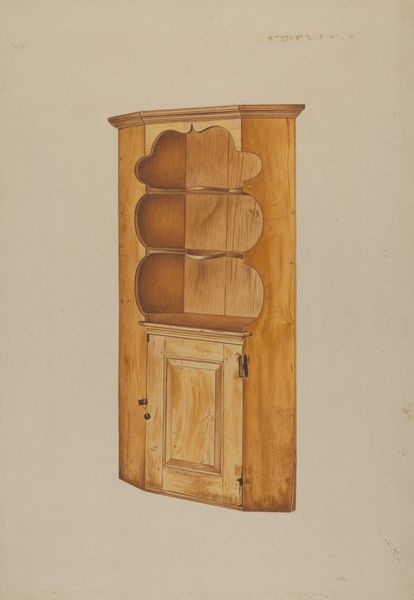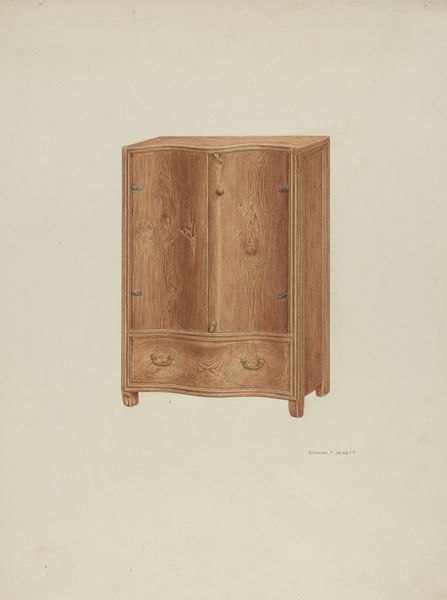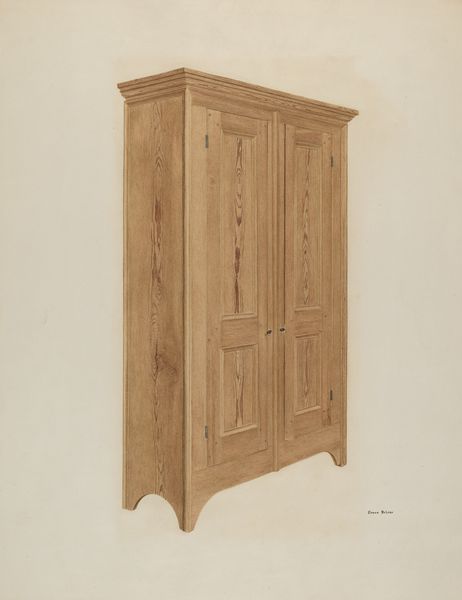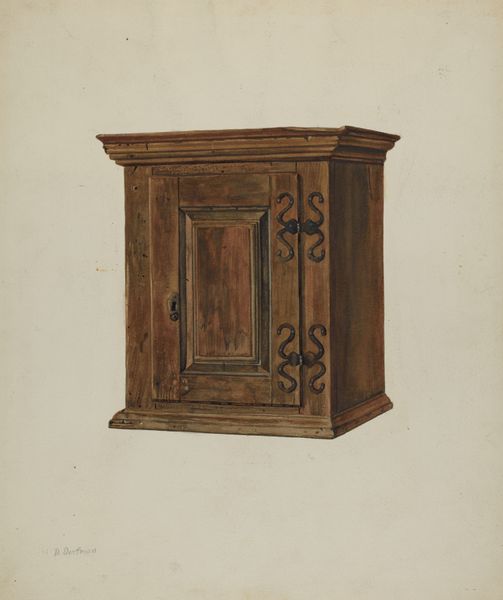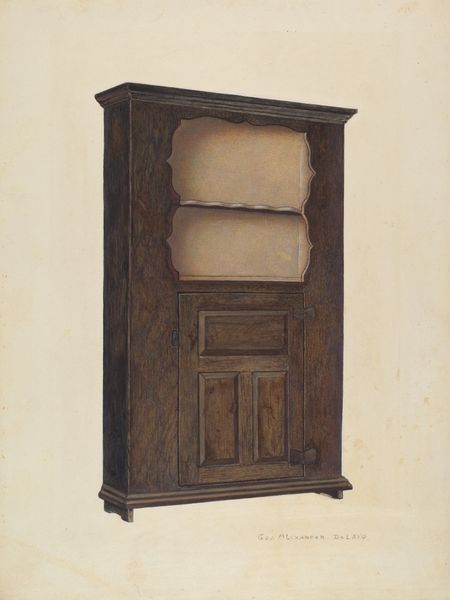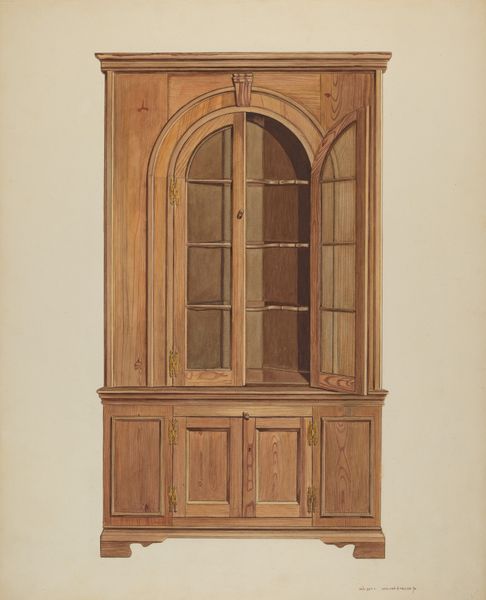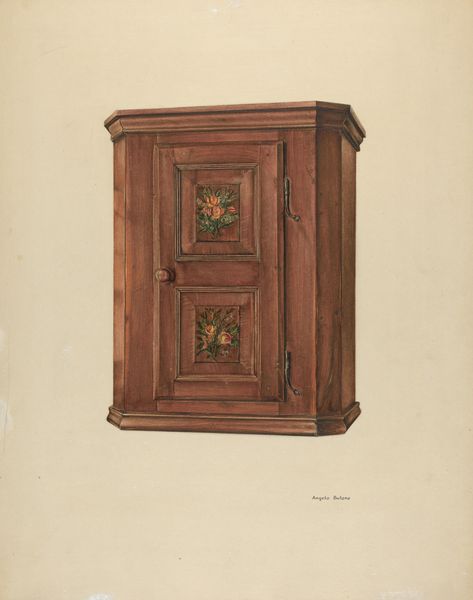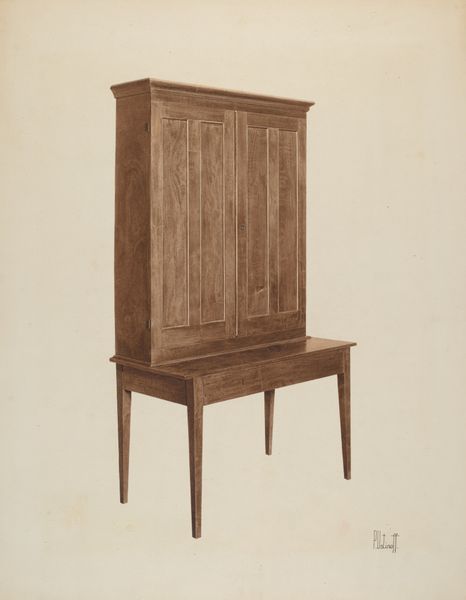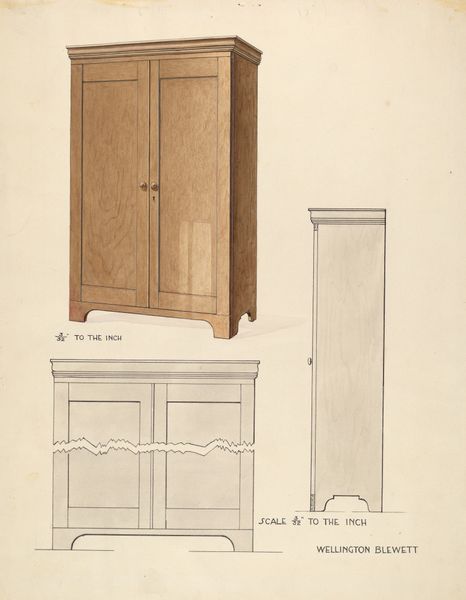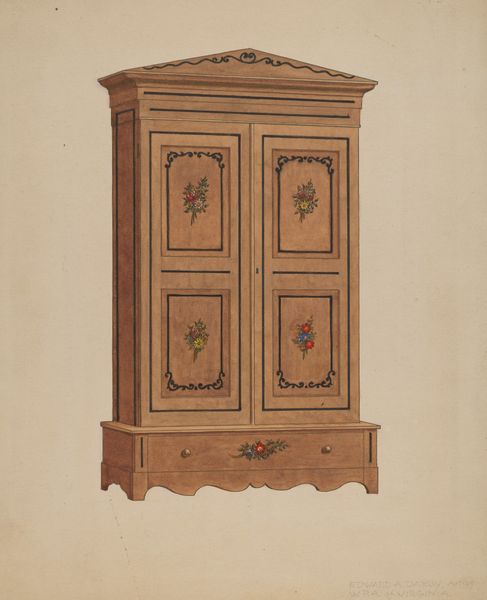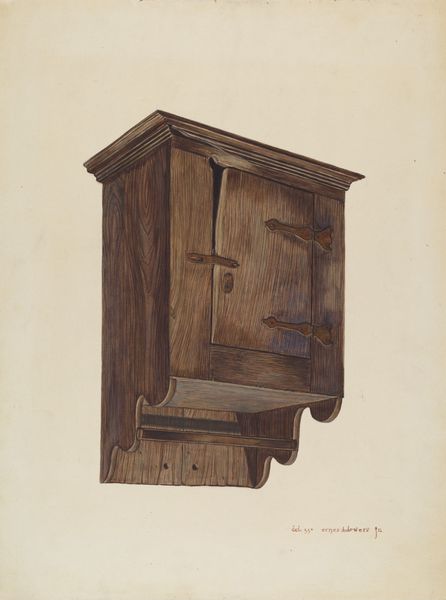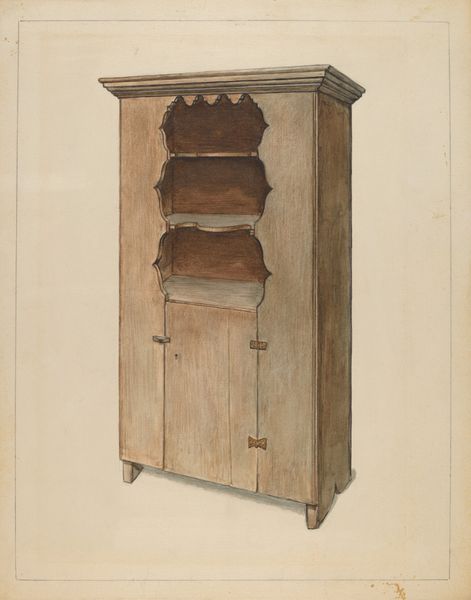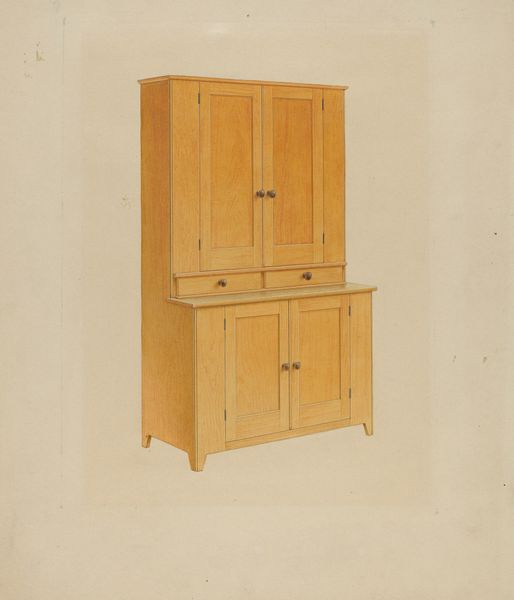
drawing, paper, pencil
#
drawing
#
paper
#
geometric
#
pencil
#
watercolor
#
realism
Dimensions: overall: 29.9 x 22.1 cm (11 3/4 x 8 11/16 in.) Original IAD Object: lower part: 54" high, 41 3/4"wide; top part: 31" high, 29 3/4"wide
Copyright: National Gallery of Art: CC0 1.0
Curator: Here we have “Baker’s Cabinet,” a drawing rendered around 1937, with humble materials: pencil and watercolor on paper. It presents a sturdy, straightforward design for a cabinet. What’s your initial take on it? Editor: Immediately, I'm struck by its simplicity and almost ethereal quality. The soft watercolor washes give it an unexpected lightness, a ghostliness, considering its subject is a solid piece of furniture designed for serious work. Curator: Exactly. The anonymous artist beautifully captured a design, not just a mere object. Those geometric forms… they are essential. Notice how the lines are clean, and emphasize functionality, revealing the spirit of simple utility. It reflects a wider movement prioritizing functionality during that time, don't you think? Editor: I do, absolutely. But also, I can't help but see a quiet yearning in its visual language. Wood represents growth, nourishment, domestic comfort. It's not merely about storage; it whispers of the heart of a home, of gathering around food and hearth. Curator: I like that read a lot. It connects us to a simpler time. There’s also a striking focus on material and the cabinet's construction; those little nail heads are meticulously depicted! It’s an artifact memorializing craftsmanship. Editor: Those meticulously rendered nail heads, for me, evoke an interesting parallel with earlier reliquaries—sacred objects preserved and honored. Here, a common cabinet is, quite reverently, enshrined with precise detail. Curator: That’s brilliantly put! It bridges the mundane and the elevated—the cabinet itself becomes a symbol, a cultural icon. And, though realistically rendered, there's a sense that this isn’t just one particular cabinet, but the very idea of a baker’s cabinet. Editor: Perhaps. Now that I linger here, there's something beautifully stoic about the image that moves beyond utility into something approaching folk memory. The collective idea of a Baker’s Cabinet as this drawing memorializes it… almost like an architectural rendering of our dreams. Curator: Agreed. It feels good to know the symbolic undercurrent of even the simplest things. It shows how design speaks to cultural and even spiritual identity. Editor: Indeed, finding meaning behind the ordinary and elevating objects through representation—that feels so fundamentally human.
Comments
No comments
Be the first to comment and join the conversation on the ultimate creative platform.
